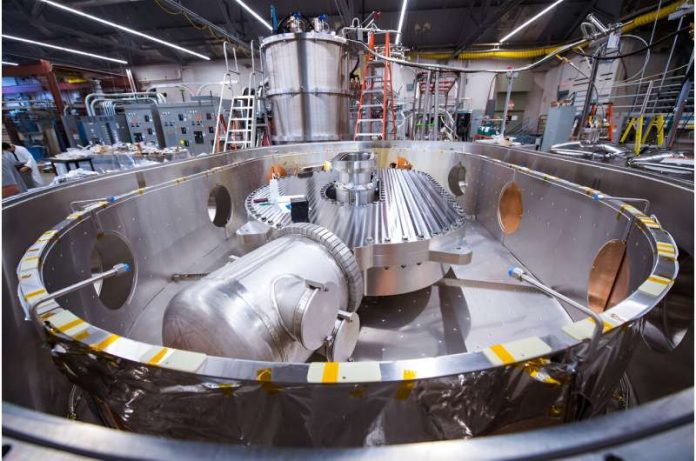
In the early hours of September 5, 2021, a team of engineers at MIT’s Plasma Science and Fusion Center (PSFC) made a groundbreaking discovery with the successful test of a new kind of magnet.
This wasn’t just any magnet, but a large-scale, high-temperature superconducting magnet that achieved a world-record magnetic field strength of 20 tesla.
This achievement is not just a number; it’s the key to unlocking the potential of fusion power plants, which promise to provide a virtually unlimited source of energy.
The excitement was palpable as the team, having worked tirelessly on this project, witnessed the realization of their efforts. This magnet test was crucial for the development of the SPARC fusion device, marking a significant step forward in fusion research.
What followed was a meticulous analysis of the magnet, involving further tests and evaluations to understand its capabilities and limits fully.
This intense period of research and testing culminated in a collection of six peer-reviewed papers, published in the March issue of IEEE Transactions on Applied Superconductivity. These papers detail the magnet’s design, the process of its creation, and the valuable insights gained from the tests.
The findings were a resounding validation of the computer models and predictions, confirming that the unique design of this magnet could indeed be the foundation of future fusion power plants.
The significance of this magnet lies in its use of a high-temperature superconducting material, known as REBCO (rare-earth barium copper oxide).
This material allows the magnet to operate at higher temperatures than traditional superconducting magnets, which significantly enhances its performance and practicality for fusion power generation.
The innovative design of the magnet, particularly the decision to eliminate insulation from the superconducting tape, was a bold move that paid off, leading to a more efficient and powerful magnet.
This development represents a quantum leap in fusion research. Before this achievement, the size and cost of creating a fusion reactor with the necessary magnetic fields were dauntingly high.
However, the successful test of this magnet has dramatically changed the landscape, reducing the projected cost and size of a fusion reactor by a factor of nearly 40.
The implications of this breakthrough extend far beyond the realm of academic research. Fusion power has the potential to provide a clean, safe, and inexhaustible source of energy, harnessing the same process that powers the sun and stars.
With the successful development of fusion power plants, humanity could access a nearly limitless supply of energy without the greenhouse gas emissions or significant radioactive waste associated with current methods of power generation.
The journey to this point has been fueled by decades of dedicated research and experimentation in the field of fusion energy.
The PSFC’s achievement with the high-temperature superconducting magnet is a testament to the persistence, innovation, and collaboration of scientists and engineers committed to solving one of the most challenging problems of our time.
As the SPARC project and similar initiatives around the world continue to advance, the dream of harnessing fusion energy for a sustainable and prosperous future comes ever closer to reality.
This milestone in magnetic technology not only paves the way for practical fusion power but also highlights the remarkable achievements possible when scientific curiosity meets engineering prowess.
Copyright © 2024 Knowridge Science Report. All rights reserved.



